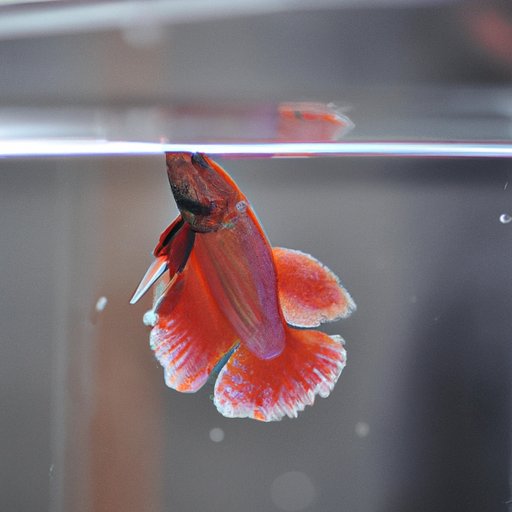
Introduction to Breeding Betta Fish
Betta fish, also known as Siamese fighting fish, are popular freshwater fish that are known for their vibrant colors and elaborate fins. Breeding betta fish can be a rewarding experience for hobbyists who want to raise healthy fish and possibly even create new color strains or patterns. However, breeding bettas requires careful preparation, knowledge, and dedication.
Preparing the Breeding Tank
Before breeding betta fish, it’s essential to set up the breeding tank correctly. The size of the tank should be at least ten gallons, with a divider to separate the male and female bettas. The water level should be shallow, around six inches, and the temperature should be around 78-82 °F. Betta fish prefer slightly acidic to neutral water with a pH range of 6.5 to 7.5, so it’s crucial to test and adjust the water parameters accordingly. It’s also essential to have proper filtration and lighting in the breeding tank.
Selecting Breeding Pairs
Choosing the right breeding pairs is essential for successful breeding. It’s best to select healthy, active, and mature bettas with desirable physical characteristics, such as bright colors, long fins, and symmetrical body shape. It’s also important to consider the compatibility of the pair, as betta fish can be aggressive and territorial. Male and female bettas should only be introduced when they seem interested in each other, and this can be observed by placing a female in a separate container that is visible to the male betta.
Conditioning the Bettas
Before breeding, it’s recommended to condition the bettas by feeding them high-quality food, such as live or frozen brine shrimp, bloodworms, or daphnia. Dim lighting can also stimulate breeding behaviors in bettas. Regular water changes should be made to ensure the water parameters are optimal for breeding. Additionally, it’s crucial to quarantine any new bettas for at least two weeks to prevent the spread of diseases that could harm the breeding pair or their offspring.
Introducing the Bettas
Once the bettas are conditioned, it’s time to introduce them. The breeding process can be initiated by placing the male and female bettas in the breeding tank, separated by the divider. The male betta may start displaying courtship behaviors, such as building bubble nests and flaring his fins, while the female betta will become receptive, showing her vertical stripes.
Caring for the Fry
The female will lay her eggs, which the male will fertilize. After the eggs hatch, the fry will cling to the underside of the bubble nest. Betta fry are tiny and require a specialized diet of brine shrimp or infusoria. The fry should be separated from the parents once they are free-swimming. It’s necessary to maintain excellent water quality and ensure the fry have enough food to grow and develop correctly.
Troubleshooting Issues
During the breeding process, several issues can arise, such as fin nipping, egg fungus, or low hatch rates. These may be caused by poor water quality, improper tank setup, or improper conditioning of the bettas. It’s essential to monitor the breeding process carefully and be prepared to adjust conditions if necessary. Patience and careful attention are crucial for breeding success.
Conclusion
Breeding betta fish can be an exciting and rewarding hobby that requires knowledge, preparation, and dedication. By following the steps outlined in this guide, hobbyists can successfully breed healthy and beautiful bettas while also learning about these fascinating fish. Remember to always prioritize the health and well-being of the fish and to practice responsible breeding practices.




